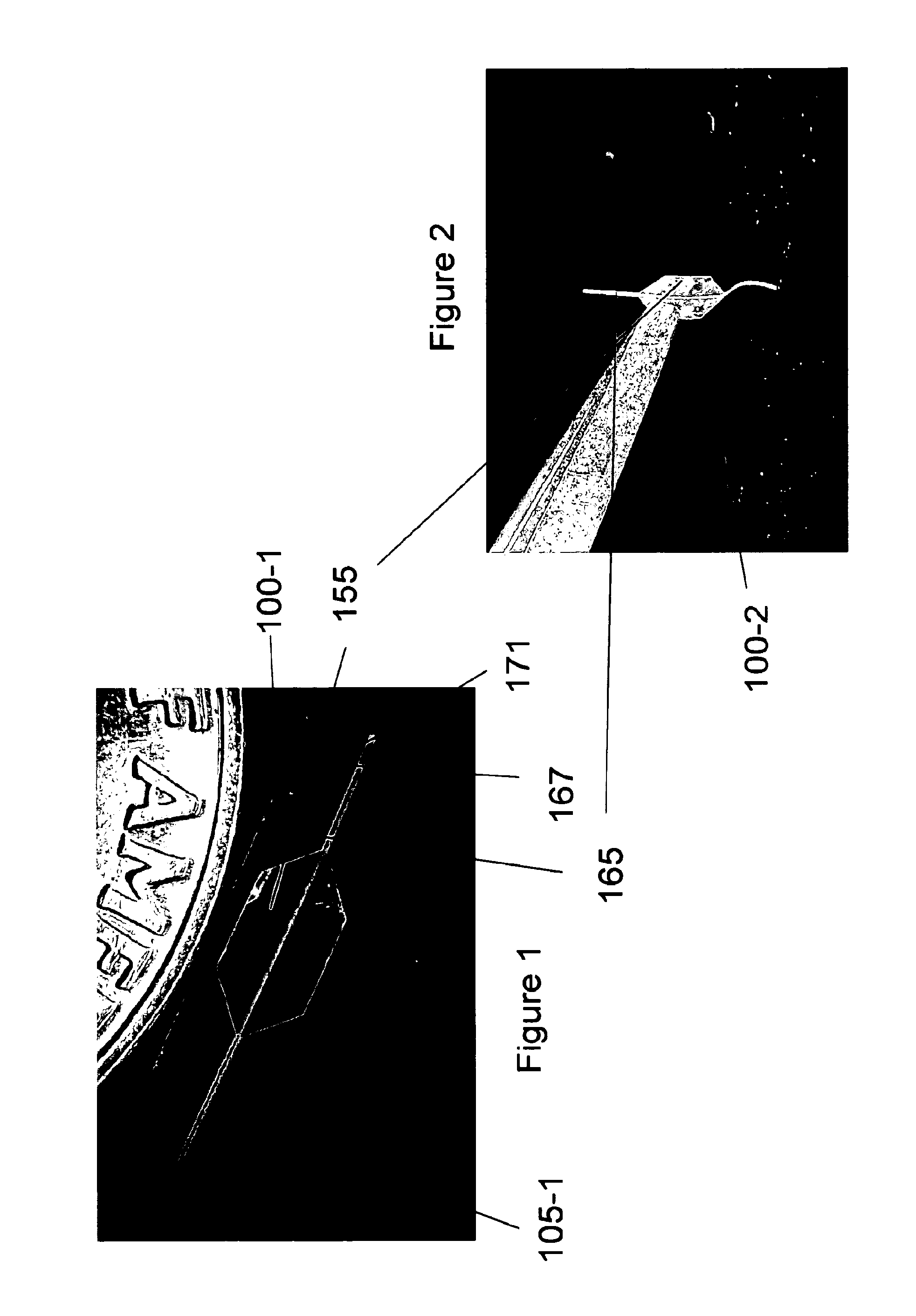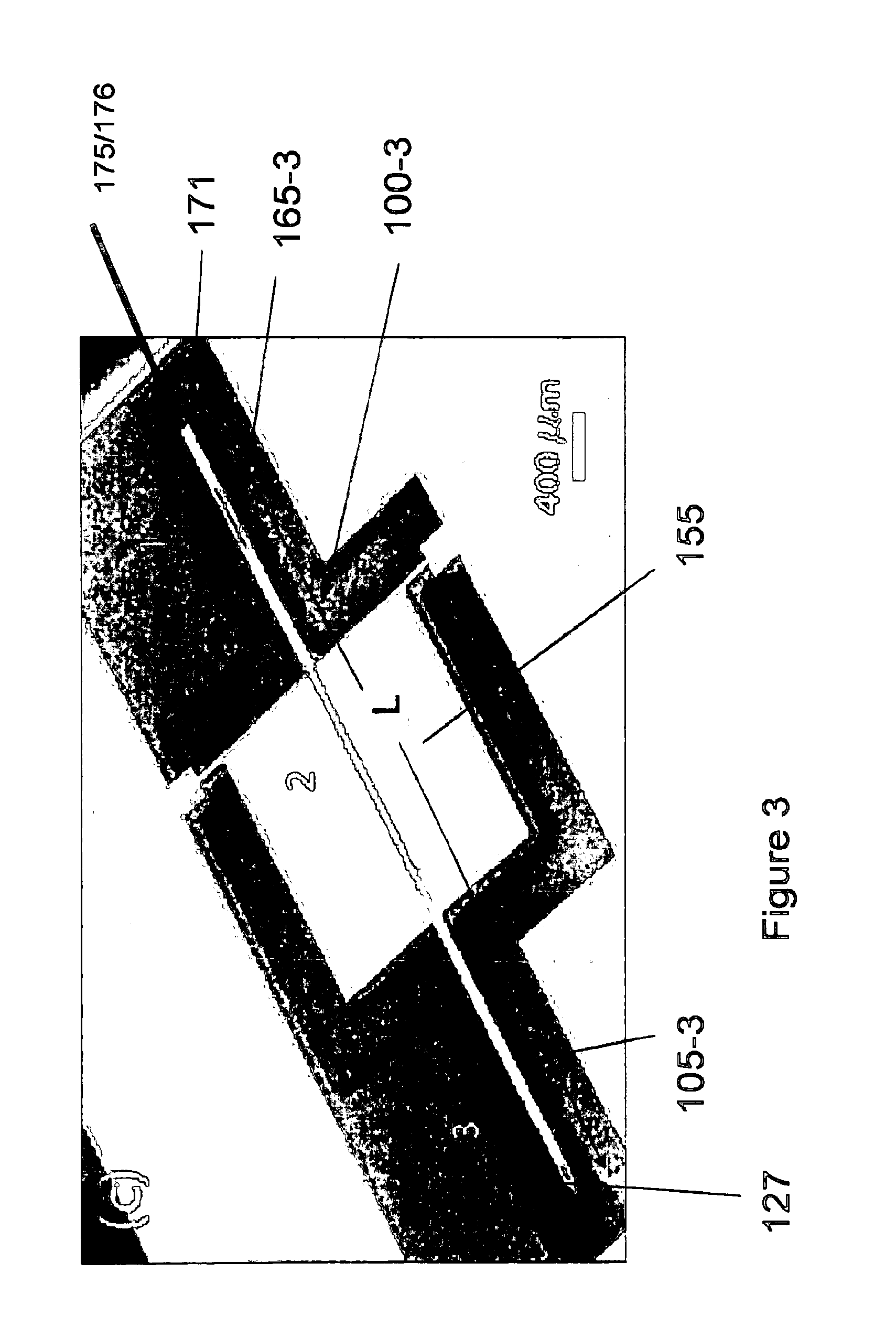Convection enhanced delivery apparatus, method, and application
a delivery apparatus and enhanced technology, applied in the direction of enzyme stabilisation, peptide/protein ingredients, catheter, etc., can solve the problems of uncontrollable drug delivery, unfavorable tissue disturbance, and difficulty in controlling the distribution of infused molecules, so as to reduce the disturbance of tissue, reduce backflow or reflux, and reduce the cross-sectional area.
- Summary
- Abstract
- Description
- Claims
- Application Information
AI Technical Summary
Benefits of technology
Problems solved by technology
Method used
Image
Examples
Embodiment Construction
[0017]An embodiment of the invention is directed to a microfabricated, silicon-based CED device. The device comprises a silicon shank portion, at least one individual parylene channel disposed along at least a part of an entire length of the shank, wherein the channel has one or more dimensioned fluid exit ports disposed at one or more respective locations of the channel and a fluid (drug) input opening. The fluid input opening may be configured or adapted to be connected to a fluid reservoir and / or a pump and / or a meter and / or a valve or other suitable control device(s) or apparatus that supplies and / or delivers fluid (e.g., a drug) to the microfabricated device. According to an aspect, the device includes a handle to aid in the manipulation of the device. A distal end of the device may be pointed or otherwise appropriately shaped to aid in its penetration of tissue or other anatomical structure. According to an aspect, the one or more individual parylene channels and their associa...
PUM
| Property | Measurement | Unit |
|---|---|---|
| length | aaaaa | aaaaa |
| length | aaaaa | aaaaa |
| length | aaaaa | aaaaa |
Abstract
Description
Claims
Application Information
 Login to View More
Login to View More - R&D
- Intellectual Property
- Life Sciences
- Materials
- Tech Scout
- Unparalleled Data Quality
- Higher Quality Content
- 60% Fewer Hallucinations
Browse by: Latest US Patents, China's latest patents, Technical Efficacy Thesaurus, Application Domain, Technology Topic, Popular Technical Reports.
© 2025 PatSnap. All rights reserved.Legal|Privacy policy|Modern Slavery Act Transparency Statement|Sitemap|About US| Contact US: help@patsnap.com



